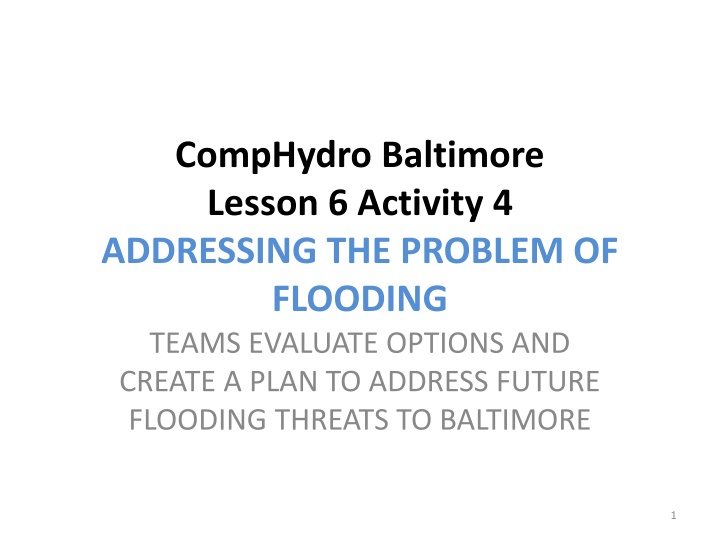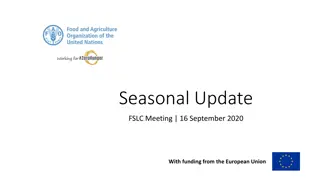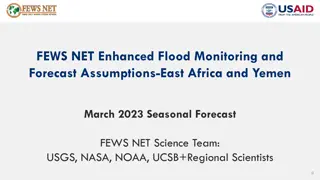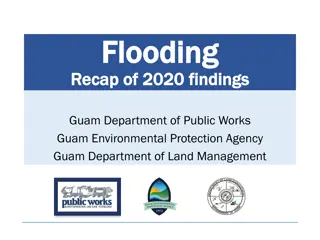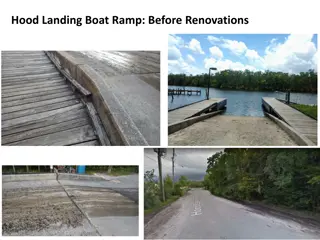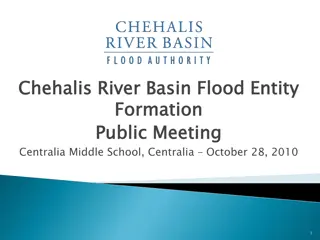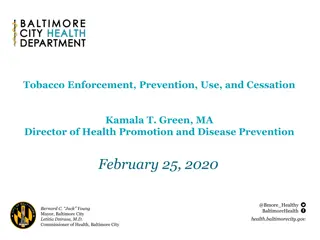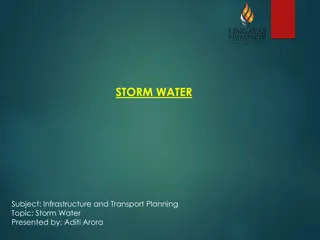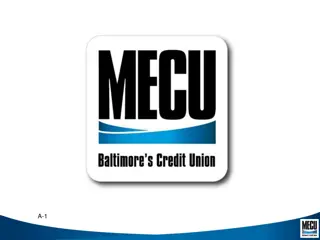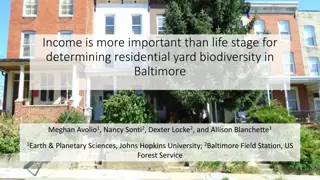Addressing Future Flooding Threats in Baltimore
In this activity, teams evaluate options and create a plan to address the problem of flooding in Baltimore. Factors causing flooding, flood reduction options like rain gardens and tree plantings, and bioretention facilities are explored to develop a comprehensive plan to mitigate future flooding risks.
Uploaded on Mar 16, 2025 | 0 Views
Download Presentation

Please find below an Image/Link to download the presentation.
The content on the website is provided AS IS for your information and personal use only. It may not be sold, licensed, or shared on other websites without obtaining consent from the author.If you encounter any issues during the download, it is possible that the publisher has removed the file from their server.
You are allowed to download the files provided on this website for personal or commercial use, subject to the condition that they are used lawfully. All files are the property of their respective owners.
The content on the website is provided AS IS for your information and personal use only. It may not be sold, licensed, or shared on other websites without obtaining consent from the author.
E N D
Presentation Transcript
CompHydro Baltimore Lesson 6 Activity 4 ADDRESSING THE PROBLEM OF FLOODING TEAMS EVALUATE OPTIONS AND CREATE A PLAN TO ADDRESS FUTURE FLOODING THREATS TO BALTIMORE 1
Develop a Plan Review What two factors cause flooding? Rainfall Runoff Challenge You will work in groups to develop a plan to reduce the likelihood of future flooding in either the West Branch of Herring Run or your Schoolyard. Start by creating a list of flood reduction options you might consider: Increase evapotranspiration by planting trees Increase infiltration of rainwater Install rain gardens, bioretention facilities and curb bump outs. Reduce hard surfaces such as parking lots, roadways and buildings Spend a few minutes researching how the following best management practices reduce flooding. 2
Flood Reduction Options Curb Extension A curb extension protrudes into the street and can be landscaped to reduce storm water runoff. Curb Extensions are placed in a location where storm water from the street above will travel down the roadway and enter the Extension through a cut out. Plants then take up the water that has entered the soil and through the process of evapotranspiration, this water returns to the air as water vapor. Water may also infiltrate into the soil where it is stored or moves slowly down towards the water table. 3
Flood Reduction Options Rain Gardens A rain garden retains storm water similar to the Curb Extension. Rain gardens are typically found in people s yards, schoolyards and business properties and catch water coming from downspouts, driveways or parking lots. 4
Flood Reduction Options Bioretention Facilities Bioretention Facilities treat very large areas of land such as large parking lots or business parks. Plants work to remove water similarly to that of Rain Gardens, however, Bioretention Facilities are connected directly to storm drains. If too much water enters the Facility, excess water drains directly into the storm drain system. 5
Flood Reduction Options Tree Plantings Trees take up water that has infiltrated into the soil. Water leaves the tree as water vapor through the process of evapotranspiration. 6
Flood Reduction Options Green Roofs A green roof system is an extension of the existing roof which allows plants to grow. Water is stored and then taken up by the plants where it is then returned to the atmosphere through evapotranspiration. 7
Construction Costs expensive Amount Treated Total Cost $60,249 Flood Reduction Option Curb Extension 0.26 acres Rain Garden 0.023 acres $2100 Bio-Retention Facility 1.5 acres $520,000 Tree Planting ~100 gallons of stormwater per year $100 per tree Green Roof Holds 70% of rainfall $30/square foot Slide modified fr K Burgess, BCity DPW
Evaluation of Options How does it work? Where could this option be used? How well do you think this option would work in the West Branch of Herring Run or your Schoolyard? What are the drawbacks, limitations or negatives of using this method? What are the expected costs of implementing this option? 9
Evaluation of Flood Reduction Plan Once your group has evaluated all options, use provided guide to devise a plan for reducing flooding in the West Branch of Herring Run or your Schoolyard after a rainstorm. Your plan can include one or more flood reduction methods. Think about how a computational model could be used to test your plan and how your plan may address concerns of one or more stakeholders. 10
Planning Time You have 30 minutes to work with group. Prepare to spend a few minutes sharing your flood reduction strategy with the class. Use provided maps to indicate where your plan would be implemented in your Schoolyard or West Branch of Herring Run. 11
